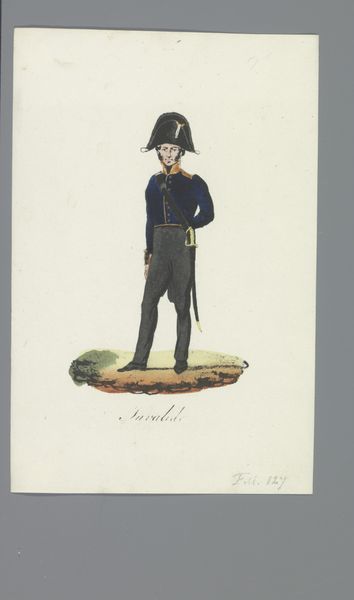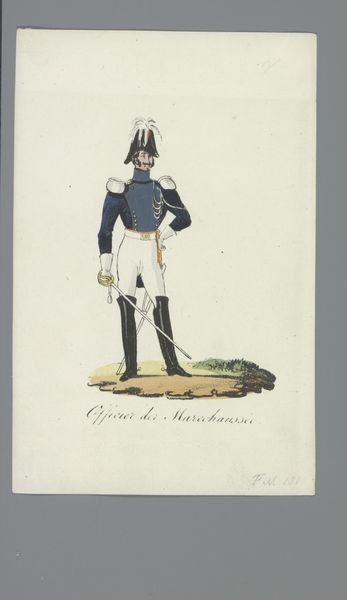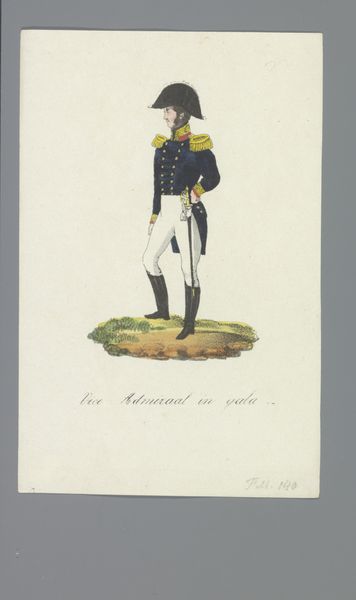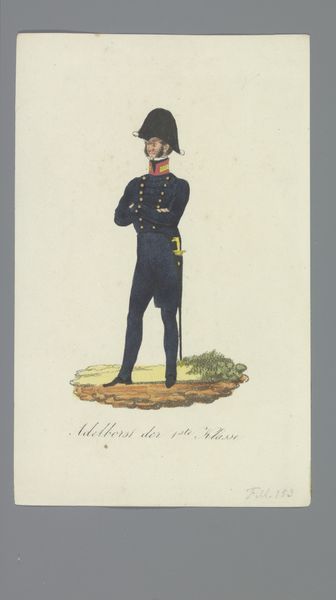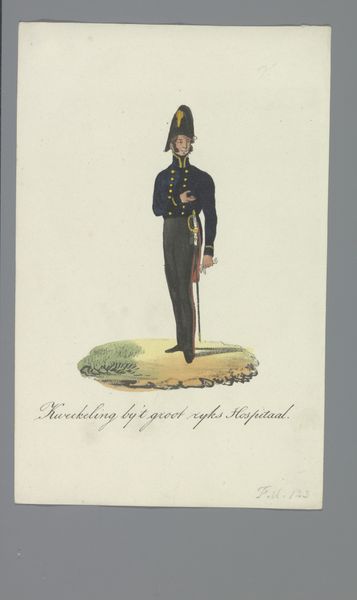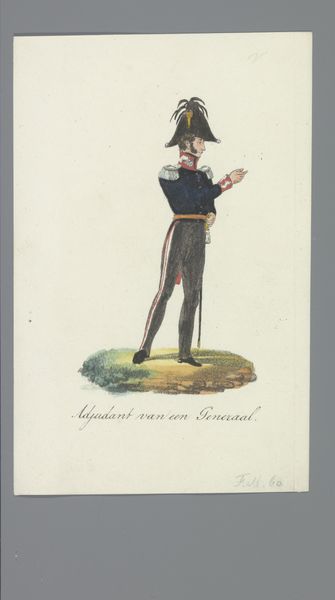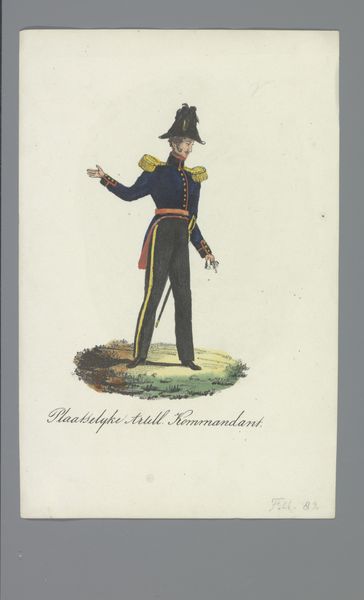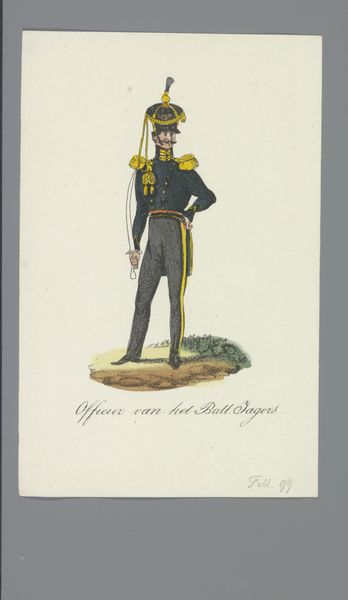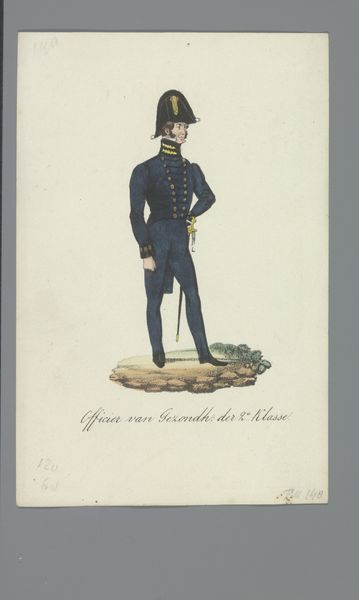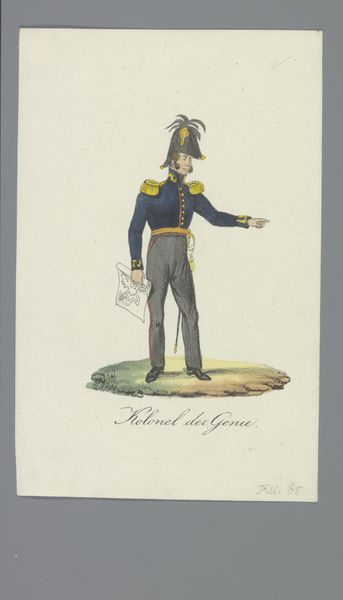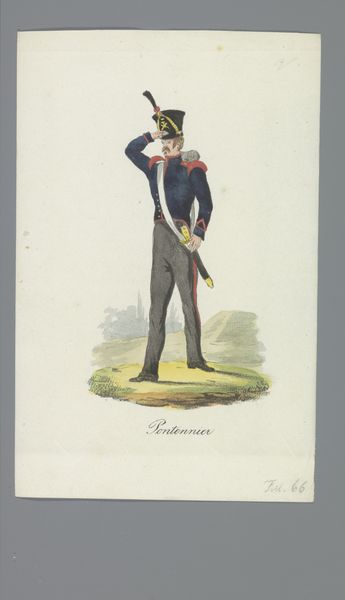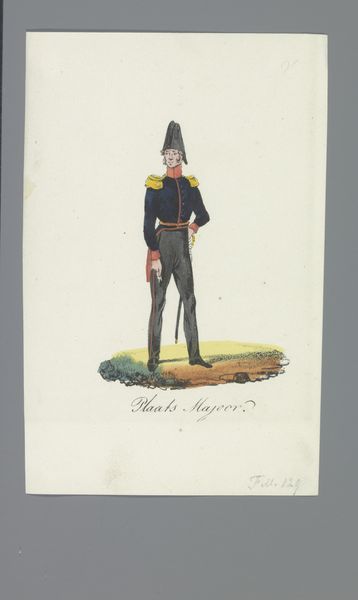
watercolor
#
portrait
#
watercolor
#
romanticism
#
costume
#
watercolour illustration
#
genre-painting
#
history-painting
#
academic-art
Dimensions: height 170 mm, width 110 mm
Copyright: Rijks Museum: Open Domain
Editor: This watercolor, "Plaatselijke Kommandant" by Albertus Verhoesen, likely created between 1835 and 1850, features a local military commander. The fine detail, almost like an illustration, feels very proper. What strikes you about it? Curator: I'm drawn to how the material realities of military life are presented here. It’s not just about glorifying power; it's about visualizing the standardized uniform and the labor required to produce it. The watercolor medium itself allows for a meticulous detailing of the materials—the wool of the coat, the metallic gleam of the buttons, the polished sword. How does this representation relate to the broader economic system supporting the military? Editor: That’s interesting; I hadn't considered the economics of it all. It felt like a simple portrait at first glance. Curator: Exactly. Consider the social context: the rise of standardized uniforms coincides with industrial production. The individual is subsumed by the requirements of the state. Think about the craftspeople, the tailors and metalworkers who produced these objects, often working under exploitative conditions. Editor: So you're saying the painting is less about the individual and more about the system that produced his image and attire? Curator: Precisely. The materials, the labor, and the mode of representation are all interconnected. Even the choice of watercolor, a relatively inexpensive medium, speaks to a certain level of accessibility in portraying military figures. This differs from large-scale oil paintings reserved for higher ranking officials. Editor: That makes a lot of sense. I guess I was focusing too much on the individual figure. I now see how it is linked to broader socioeconomic forces. Curator: Thinking materially shifts our perspective, right? We move beyond biographical details to understand how art reflects and reinforces systems of power and production. Editor: Yes, definitely. Thank you for broadening my view.
Comments
No comments
Be the first to comment and join the conversation on the ultimate creative platform.
